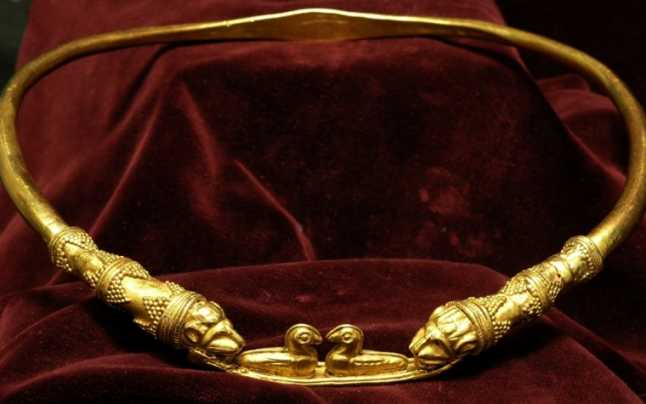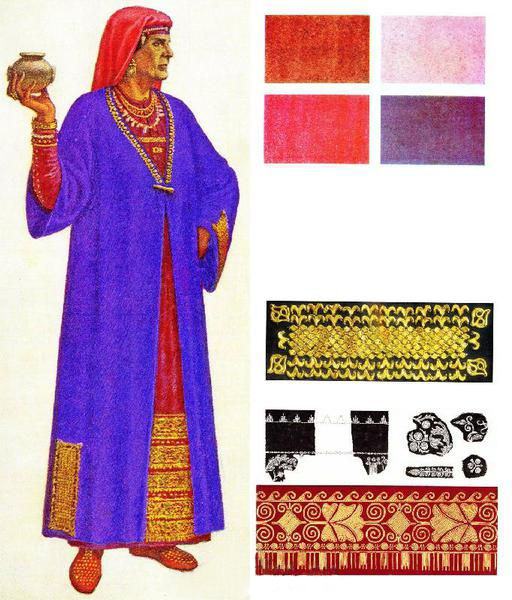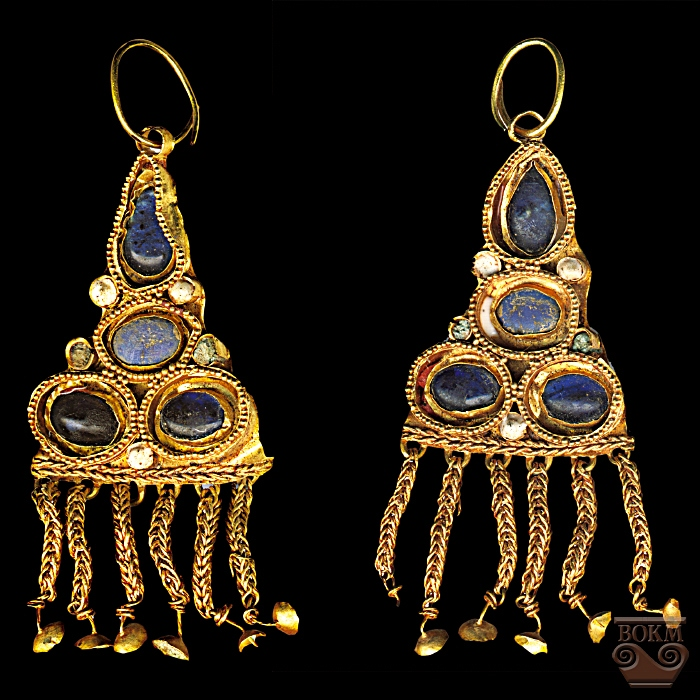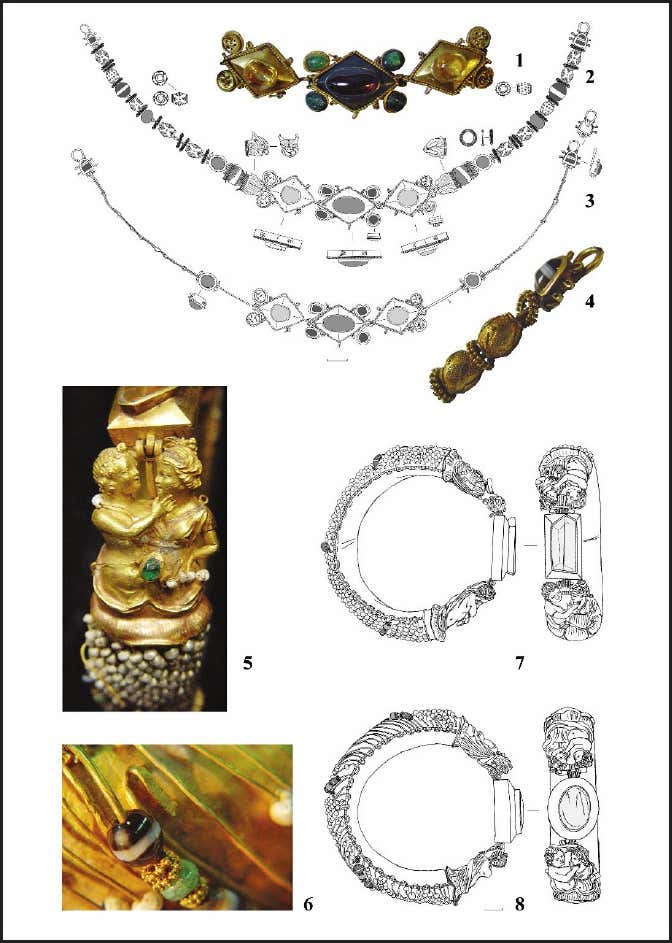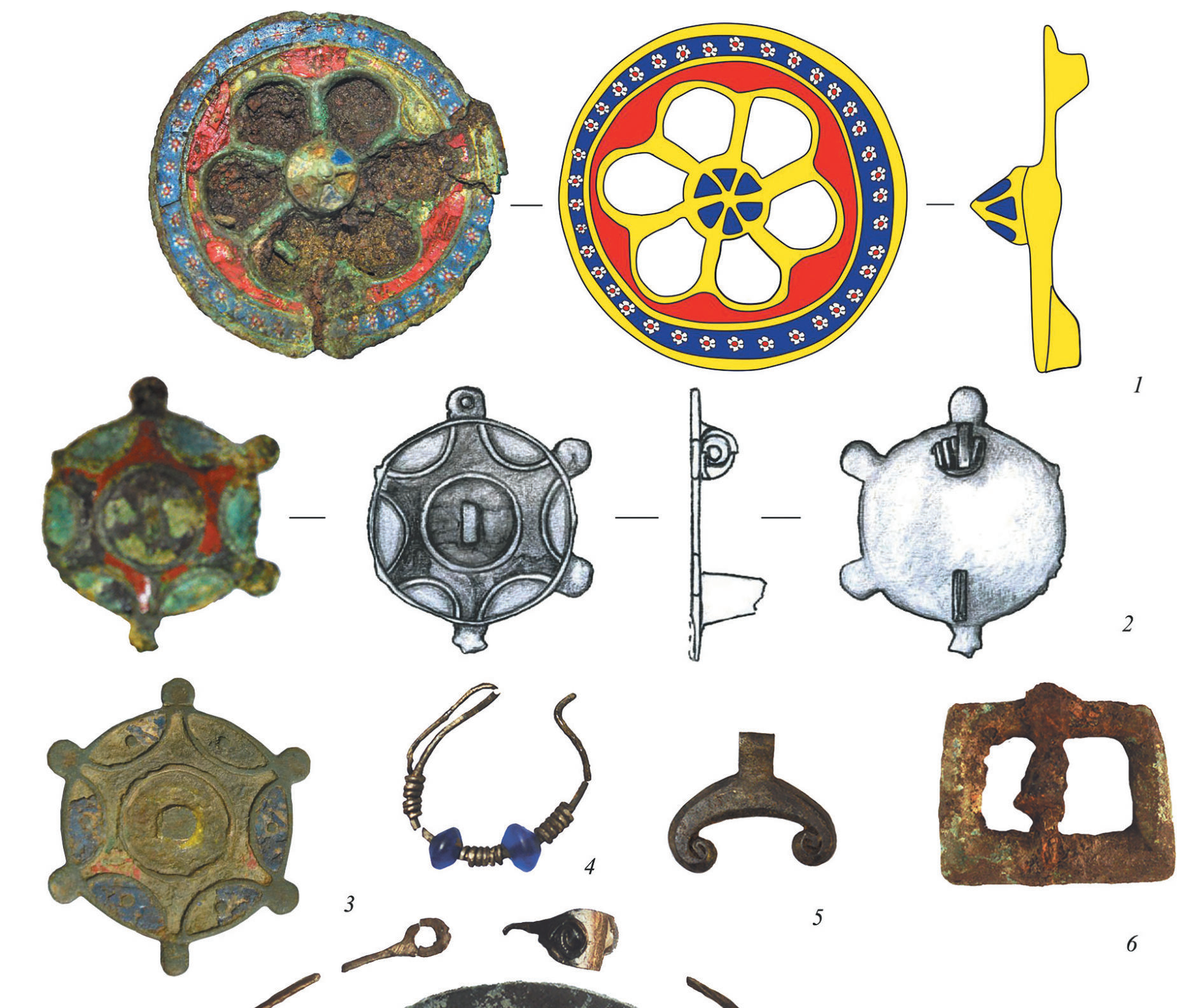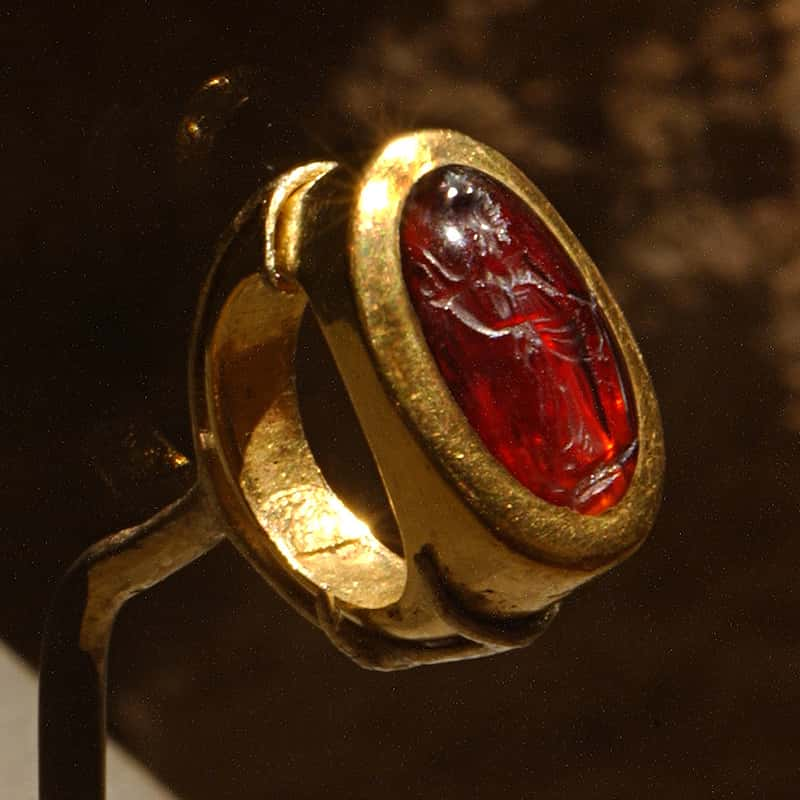Transnistria, the Pridnestrovian Moldavian Republic. In 1990, archaeologist Tatyana Shcherbakova explored an Alan’s tomb dated to the 2nd-3rd century. The burial turned out to have been robbed in antiquity, and yet the tomb retained a rather rich inventory: ritual vessels made of clay, a cast bronze cauldron with zoomorphic handles in the form of mountain goat figurines, a bronze lamp, and a bronze jug. Numerous beads made of polychrome glass, amber and coral, gold rings with a turquoise core, a gold spiral ring in the form of dragon heads, decorated with nests of garnets and blue opaque paste, were also found.
Decoration of the costume include miniature stamped plaques, which were the most numerous category of finds. They were sewn onto clothes or a funeral coverlet in a certain order, forming various ornamental compositions. This can be evidenced by the fact that there were plaques of five forms in the deck, each of which is represented by a certain number of copies.
Of particular interest are plaques with zoomorphic stylized motifs (2 pieces), rectangular in shape, 1.5 x 1 cm in size, 800 gold. The plaque depicts a lying horse, turned to the right, with its front legs thrown forward. All four corners of the plaques have holes for fastening.
The golden plaque in the form of a bell attracts special attention. A short chain of two links was attached to the top of the bell, to which a disk 0.8 cm in diameter was suspended. The base of the bell was equipped with symmetrically located holes for sewing. Dimensions of the “bell” 1 x 0.9 cm; weight – 0.61 g, gold 800.
In the Northern Black Sea region, similar plaques are known from the burial of Scythian Naples, where they date back to the turn of the 2nd-1st century BCE. The largest number of “golden plaques in the form of cones with gold discs hanging freely on a wire” was found in Northern Afghanistan (ancient Bactria) on the now world-famous Tillya-Tepe.
The decoration of clothes with embroidered ornaments, not only from gold plaques, but also from cheaper multi-colored glass beads, is very characteristic of the Sarmatian tribes. In addition, ancient authors noted that Alanian women had expensive clothes embroidered with gold.
Personal jewelry includes rings, in the remains of a deck in a mound near the village. Mokra fortunately survived three copies. In the area of the left hand, closer to the feet, two gold rings with shields in the form of amphorae were found. Rings are practically identical, differing slightly from each other only in weight.
The diameter of the rings of the rings is 1.6 cm, the width of the rings is 0.5 cm, the height of the amphorae shields is 1.6 cm, the weight of the items is 4.03 and 4.08 grams, the fineness of gold in the items is 900.
Also, in the area of the left hand, a gold ring was found, and possibly a temporal pendant in the form of a mythical creature coiled into a spiral, 4.5 turns. The product is made of a rod, triangular in cross section, flat at the bottom, the edges are riveted and modeled in the form of stylized heads. A pair of eyes is depicted by two semicircular garnet inserts mounted in pairs of socket-frames made of vertically soldered narrow strips.
The lower pair of the same garnet inserts may represent the animal’s mouth. The ears of the animal are made in the form of two almond-shaped nests filled with a dense glassy turquoise paste.
The tips of the ears end with a pomegranate, also placed in a round nest made of a vertically soldered narrow strip of metal. Product diameter – 1.8 cm, animal head dimensions – 1.6 x 0.5 cm, section – 0.2 x 0.1 cm, weight – 12.6 g, 900 gold.
[Т.А. Щербакова]
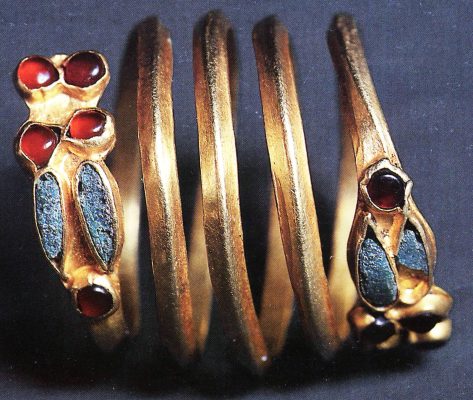
https://novostipmr.com/ru/news/21-08-15/unikalnye-arheologicheskie-nahodki-v-pridnestrove-za-100-let
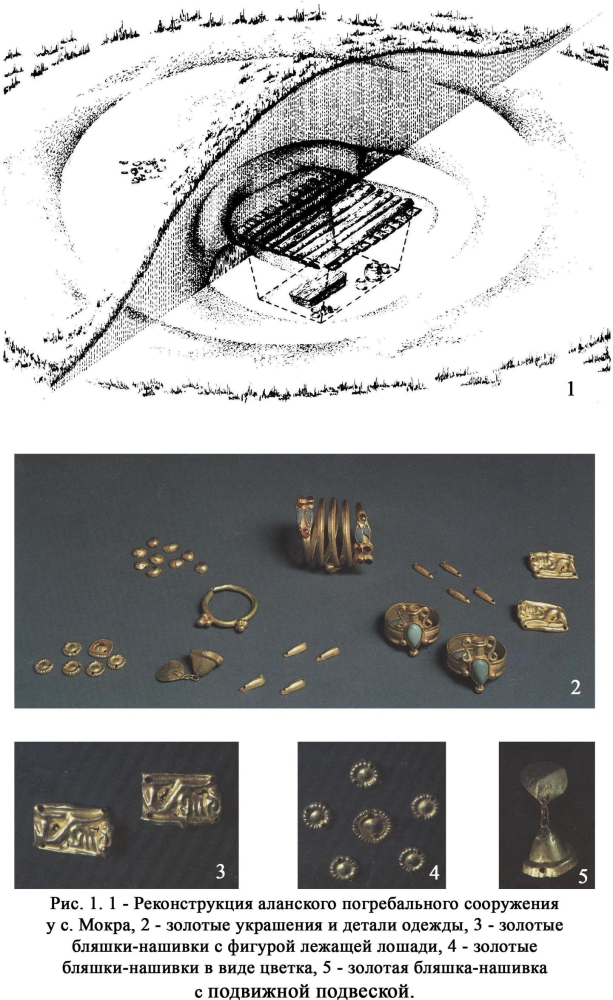
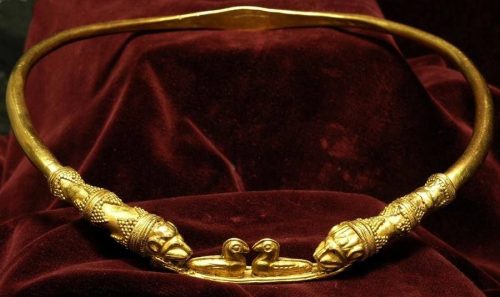
Gold necklace /torque from Dubăsari
[read more]
- Ювелирные изделия аланов в Среднем Поднестровье (по материалам кургана у с. Мокра, Рыбницкого района); Т.А. Щербакова http://arhmuseum.spsu.ru/images/page_arh_atticle/Alani.pdf
- Unique archaeological finds in Pridnestrove https://novostipmr.com/ru/news/21-08-15/unikalnye-arheologicheskie-nahodki-v-pridnestrove-za-100-let



